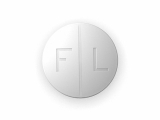Erectile therapy after prostatectomy
Have you recently undergone a prostatectomy procedure and are now experiencing erectile dysfunction? You are not alone. Erectile dysfunction is a common side effect of prostatectomy, but there are options for therapy and treatment that can help restore your sexual health.
Our comprehensive guide to erectile therapy after prostatectomy provides information on:
- The underlying causes of erectile dysfunction after prostatectomy
- The various types of therapy and treatment options available
- The benefits and risks associated with each treatment option
- How to discuss your options and treatment plan with your healthcare provider
Don't let erectile dysfunction after prostatectomy affect your quality of life. Take control of your sexual health and explore the options available to you.
Quote: "The guide was incredibly helpful in understanding the different treatment options available to me. I feel much more informed and confident in discussing my options with my doctor." - John S.
The Importance of Erectile Therapy
Regain Confidence and Intimacy
After prostatectomy surgery, many men often experience erectile dysfunction. This can lead to a loss of confidence, self-esteem, and intimacy within relationships. Erectile therapy can help these men regain their sexual health and confidence, leading to a more fulfilling and satisfying sex life.
Prevent Further Erectile Damage
Without intervention, erectile dysfunction can worsen over time, making it more difficult to treat. Erectile therapy after prostatectomy can prevent further damage to erectile function and improve the chances of a successful outcome.
Improve Overall Quality of Life
Sexual health plays an essential role in a man’s overall quality of life. Erectile therapy can improve not only sexual functioning but also mental health and well-being. By addressing the underlying causes of erectile dysfunction, men can experience an improved overall quality of life.
If you or a loved one has undergone prostatectomy surgery and are experiencing erectile dysfunction, seek the help of a qualified healthcare provider. Don’t let erectile dysfunction hold you back – regain your confidence, intimacy, and quality of life with erectile therapy.
Types of Erectile Therapy
Oral medications
One of the most common treatments for erectile dysfunction is the use of oral medications. These medications, such as Viagra, Levitra, and Cialis, work by increasing blood flow to the penis, which helps facilitate an erection. They are typically taken about an hour before sexual activity.
Injections
An injection may be administered directly into the penis to help achieve an erection. This treatment involves using a needle to inject medication, such as alprostadil, into the base or side of the penis. The medication helps to relax the blood vessels and increase blood flow to the penis, resulting in an erection. This treatment may be effective for men who do not respond to oral medications.
Vacuum therapy
Vacuum therapy involves placing a cylinder over the penis and creating a vacuum by manually or mechanically pumping air out of the cylinder. This helps draw blood into the penis, causing an erection. Once the erection is achieved, a constriction band is placed around the base of the penis to maintain the erection during sexual activity. This treatment can be effective for men who cannot take oral medications or do not want to use injections.
Penile implants
Penile implants involve surgically inserting devices into the penis to help achieve an erection. There are two types of implants: inflatable and malleable. Inflatable implants allow a man to control the timing and duration of his erection by pumping fluid into a reservoir implanted in the abdomen. Malleable implants are bendable rods that are inserted into the penis and can be adjusted manually to achieve an erection. This treatment is typically reserved for men who have not had success with other treatments.
Benefits of Therapy
1. Improved Sexual Function
Erectile dysfunction is a common side effect of prostatectomy, which can be very distressing for men. Erectile therapy can help improve blood flow to the penis and reduce anxiety surrounding sexual performance, leading to improved sexual function.
2. Increased Penile Length and Girth
Penile rehabilitation therapy can help to maintain the size and shape of the penis after prostate surgery. This can lead to an increase in penile length and girth, improving confidence in sexual performance and overall satisfaction.
3. Better Quality of Life
Sexual dysfunction can have a profound impact on a man's quality of life, affecting his mood, self-esteem, and relationships. Erectile therapy can help to restore sexual function, leading to a better quality of life and improved emotional well-being.
4. Non-Invasive and Safe
Penile rehabilitation therapy is a safe and non-invasive treatment option that can be used alone or in combination with other treatments. It offers a low-risk option for men who want to restore their sexual function and regain control over their lives.
5. Customizable Treatment Plans
Erectile therapy can be tailored to meet the unique needs of each individual patient. The treatment plan can be customized based on the patient's age, medical history, and specific symptoms, leading to more effective results and improved patient satisfaction.
In conclusion, erectile therapy offers several benefits for men who have undergone prostate surgery. It can help restore sexual function, improve quality of life, and offer a safe and customizable treatment option for men seeking to regain control over their sexual health.
Factors to Consider When Choosing Therapy
Treatment Goals
Before choosing a therapy for erectile dysfunction after prostatectomy, it's important to consider your treatment goals. Are you looking for a temporary solution while you wait for natural recovery, or are you seeking a long-term solution?
If you're looking for a temporary solution, a vacuum erection device or a penile injection may be effective. However, if you're seeking a long-term solution, you may want to consider penile implants or surgery.
Side Effects
Every therapy for erectile dysfunction after prostatectomy has potential side effects that should be considered. For example, penile injections can cause pain or scarring, while penile implants can lead to infections or mechanical failure.
It's important to discuss possible side effects with your doctor and choose a therapy based on your individual risk factors and preferences.
Cost
The cost of therapy is another factor to consider when choosing a treatment for erectile dysfunction after prostatectomy. Some treatments, such as medication or a vacuum erection device, may be covered by insurance, while others, such as surgery or penile implants, may not be covered.
It's important to discuss the cost of therapy with your doctor and consider both the short-term and long-term financial implications.
Partner Preferences
Finally, it's important to consider your partner's preferences when choosing a therapy for erectile dysfunction after prostatectomy. Some partners may prefer a therapy that is less invasive, while others may be more comfortable with a more permanent solution.
It's important to have an open and honest discussion with your partner and consider their preferences when making a decision about therapy.
- Consider your treatment goals
- Be aware of potential side effects
- Take the cost of therapy into account
- Discuss your partner's preferences
How to Get Started
Step 1: Consult with your doctor
Before starting any treatment for erectile dysfunction after prostatectomy, it is important to consult with your doctor. They can provide personalized advice and recommend the most suitable treatment based on your medical history and current health status.
Step 2: Explore your options
There are various treatment options available for erectile dysfunction after prostatectomy, including medications, penis pumps, injections, and surgical implants. Take the time to research and explore each option to determine which one is right for you.
Step 3: Try a sample pack of medication
Many men find that medications, such as Viagra or Cialis, are effective in treating erectile dysfunction after prostatectomy. Consider trying a sample pack of medication to test its effectiveness and potential side effects.
Step 4: Consider penile injections or a surgical implant
If medication is not effective, your doctor may recommend penile injections or a surgical implant. These options may offer longer-lasting or more immediate results, but also have potential risks and complications.
Step 5: Work with a therapist or counselor
Erectile dysfunction after prostatectomy can have emotional and psychological impacts. Consider working with a therapist or counselor to address any concerns or anxieties related to your sexual health.
Remember, there is no one-size-fits-all approach to treating erectile dysfunction after prostatectomy. It is important to work with your doctor to find the best treatment plan that works for you.
Follow us on Twitter @Pharmaceuticals #Pharmacy
Subscribe on YouTube @PharmaceuticalsYouTube





Be the first to comment on "Erectile therapy after prostatectomy"